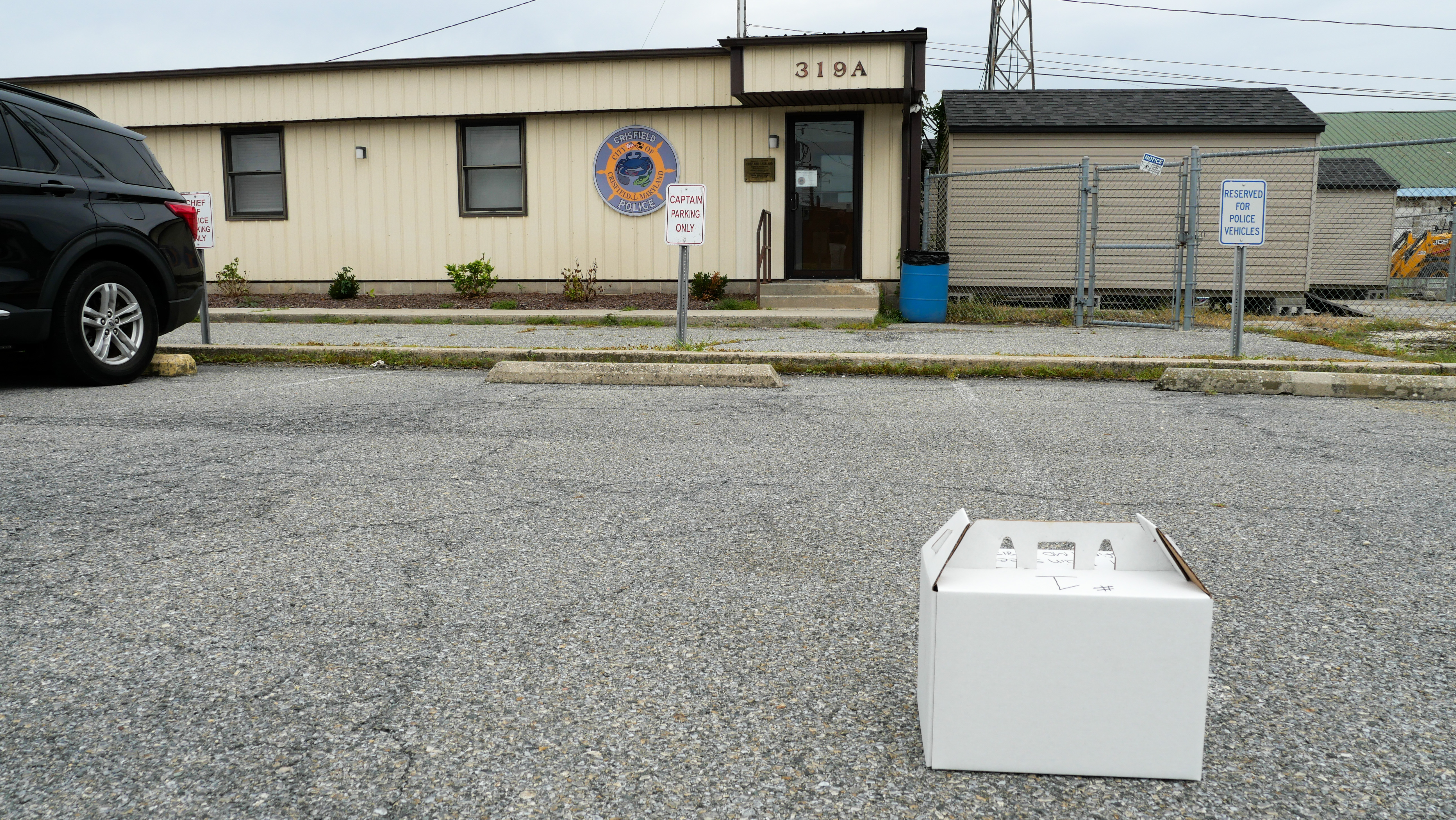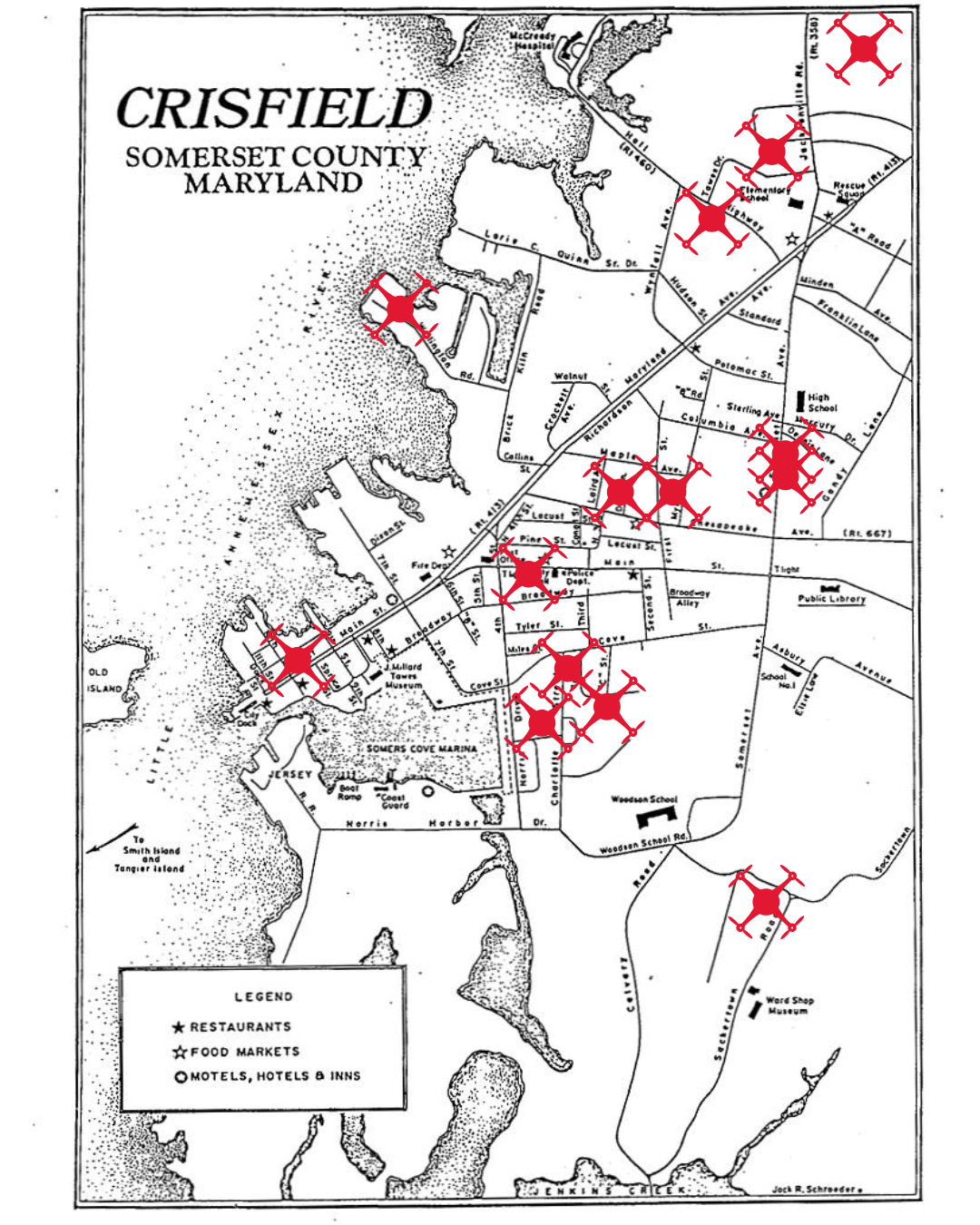Taking Healthcare Higher: Drones Deliver Medicine in Crisfield
To explore the impacts of transportation gaps, the University of Maryland’s UAS Research and Operations Center (UROC), in partnership with the Maryland Department of Planning and several other teammates, successfully launched the Maryland Eastern Shore Drone Medical Delivery Stage 1 project in Crisfield, Maryland. The pilot project’s first experiments, which ran September 15–19, were designed to gather data and show the public how advanced drone technology can expand access to critical healthcare resources for rural populations. “Having prescriptions delivered by drone to some of my homebound patients this last week was an amazing step forward in healthcare access,” said Dr. Howard Haft, a local physician, community advocate, and adjunct professor at the University of Maryland School of Medicine. “Actually seeing the drones lift off was like being at the Wright brothers’ first flight at Kitty Hawk—the beginning of a new era.” Project PurposeFunded by a U.S. Department of Transportation SMART grant, this project is a proof of concept designed to deliver prescription “There are times when it’s really difficult for people to get to the pharmacy,” said John Slaughter, director of UROC. “Some lack reliable transportation and can’t make it there at all. If we can help get their prescriptions to them, they’ll be more likely to stay on their medication programs, be healthier, and avoid hospitalizations. That’s good for patients, and it saves taxpayers money too—a win all around.” Beyond long-term health improvements, the demonstrations will also highlight potential benefits such as supporting first responders with urgent deliveries, integrating connected transportation technologies, reducing wear and tear on roads, and creating new high-tech workforce opportunities. PartnersThis collaborative effort includes:
“This is something my patients deal with all the time,” said Dr. Rozalina McCoy, an associate professor at the University of Maryland Institute for Health Computing. “I’m an endocrinologist, so I take care of people living with diabetes. For them, even one day without insulin or without their medication can be life threatening. Making sure we can get medications to their home is incredibly important. That’s exactly why we’re here working on this project.” Opening Success – Demonstration Week Recap
Deliveries were coordinated through Maddie Johns at Marion Pharmacy and Shah Yahya at Marion Discount Pharmacy. Volunteer patients received their medications at their homes or other drop-off points across Crisfield. “This technology has tremendous potential for Crisfield and other rural areas,” said Shah Yahya, pharmacist at Marion Discount Pharmacy. “In situations like flooding—something we face often here—when roads are closed, drone delivery could become a lifeline. It would also be vital for residents of Smith Island and Tangier Island, ensuring they can receive critical medications even if boat routes are shut down.” Flights were piloted by Tristan Rose of DroneUp, with media documenting operations on both Monday and Friday. Dr. Richard Debenedetto helped coordinate with pharmacies to package deliveries, and Dr. Haft observed operations throughout the week. What’s NextBuilding on the success of the Crisfield demonstrations, the UROC team is preparing for the next round of flights in January 2026, which will follow the same delivery process using a different drone platform and will not only deliver within Crisfield but extend to Smith Island. These future operations will continue to evaluate the technology’s potential to support rural healthcare access and emergency response.
October 2, 2025 Prev Next |


 medications, with future routine and emergency applications that could include special meals, lab specimens, small medical devices, trauma kits, and more. The project begins with flights within the City of Crisfield to look at improving local delivery of medications on the mainland Eastern Shore. It then leads to deliveries between Crisfield and Smith Island, an isolated Chesapeake Bay community of about 200 residents accessible only by boat.
medications, with future routine and emergency applications that could include special meals, lab specimens, small medical devices, trauma kits, and more. The project begins with flights within the City of Crisfield to look at improving local delivery of medications on the mainland Eastern Shore. It then leads to deliveries between Crisfield and Smith Island, an isolated Chesapeake Bay community of about 200 residents accessible only by boat. While weather and technical issues limited operations somewhat, the team achieved notable successes making 28 successful deliveries:
While weather and technical issues limited operations somewhat, the team achieved notable successes making 28 successful deliveries: